The Best Fluffy Pancakes recipe you will fall in love with. Full of tips and tricks to help you make the best pancakes.
Pizza dough hydration
What is pizza dough hydration?
In simple terms, pizza dough hydration is the total amount of water used in a pizza dough recipe in relation to the amount of flour being used in the recipe. This is referred to as a percentage.
For example, if your recipe has 1000g of flour then to have a dough hydration of 65%, you would add 650ml of water. (1000g/650ml x100 = 65% Hydration).
Really it’s that simple. By adjusting the levels of water (hence the hydration of the flour) in a recipe, you can greatly affect the final result of your pizzas base.
Why is dough hydration important?
Simply, there are a number of different pizza styles, each with its unique characteristics. To achieve a perfect style of, Neapolitan, New York Style, Chicago deep dish, your artisan style or a California crisp bread pizza, your going to need to know your dough hydration levels.
| Pizza Style | Dough Hydration Level | Best Flour for Pizza Style |
|---|---|---|
| New York Style | 60% – 65% hydration | Enriched high gluten bread flour |
| Artisan Style | 55% – 65% hydration | Ranges from Type 00 to high gluten flours. |
| Neapolitan Style | 55% – 62.5% hydration | Italian 00 or 0 wheat flour |
| Chicago Deep Dish Style | 40% – 50% hydration | All-purpose flour |
| California Crispy Style | 60% – 70% hydration | All-purpose or bread flour. |
Dough Hydration and Water absorption
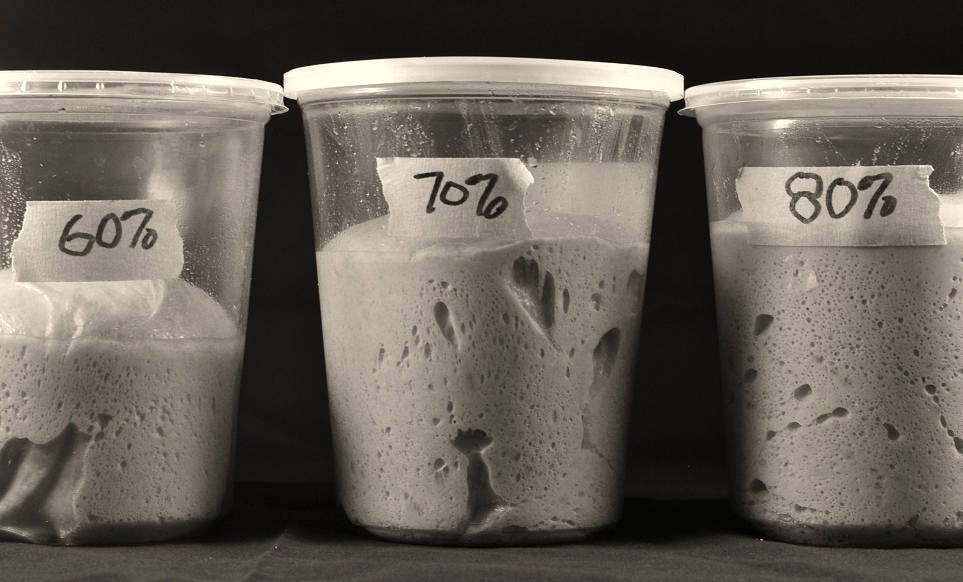
It should be noted that not all flours are the same. Some flours cannot absorb a high rate of water absorption then others. If you are not aware of what water absorption your flour can handle, it is best to experiment with a lower percentage (50-60%) of hydration and increase as you experiment with your flour.
Water absorption of flour can be affected by several different factors , the most important being gluten content, starch content and flour strength.
Flour Types Used in Pizza Making
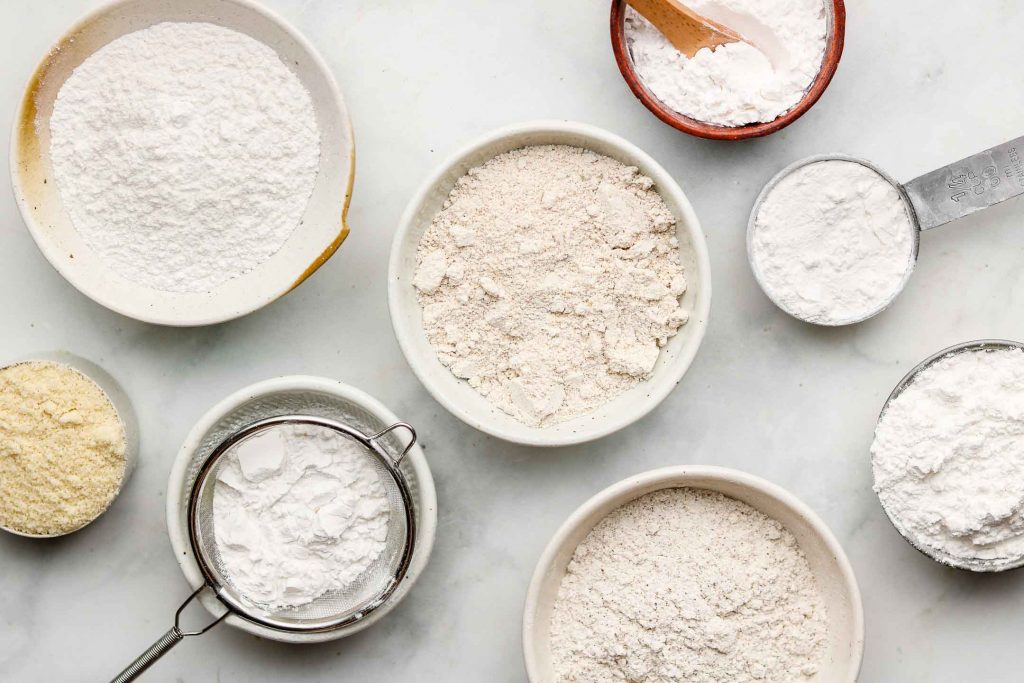
| Flour | Protein Content | Water Absorption |
| Finely milled Italian “00” Flour | 12.5% | low |
| All-purpose Flour | 11.7% | moderate |
| Bread Flour | 12.7% | high |
| Cake or Pastry Flour | 9.4% | low |
Water Levels of your pizza dough recipe
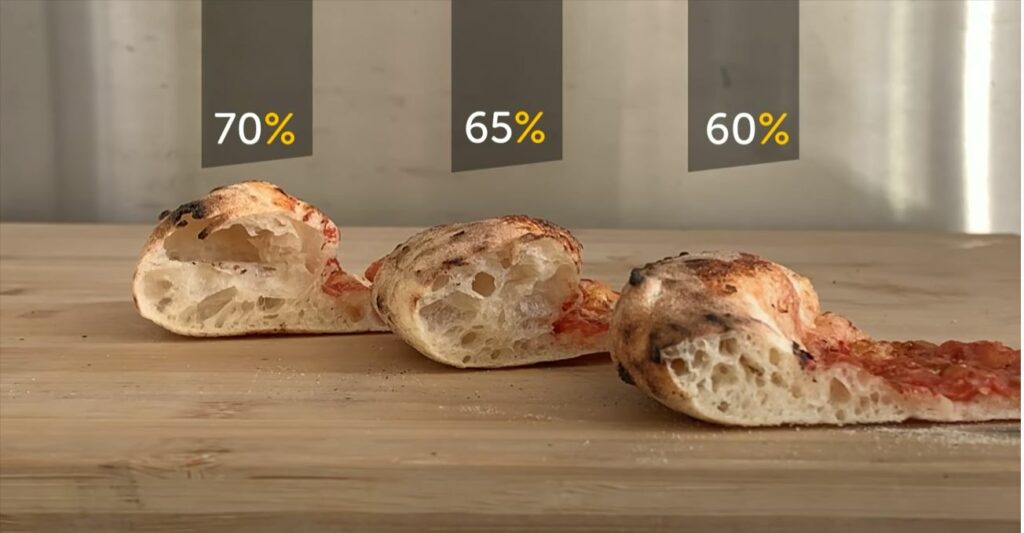
Water, is the second most important factor after flour that will affect your pizza base and crust when you cook your pizza. Adjusting the water levels, affects the hydration level of your dough. When you adjust your hydration levels, the properties of the dough are greatly affected.
Properties affected by dough hydration
- The elasticity of the dough.
- The stickiness of the dough.
- Proofing action of the yeast.
- Gluten development and structure of the dough
Elasticity
As a pizza doughs hydration increases, it will become softer, easier to stretch and harder to handle. A dough with a high elasticity is more difficult to form into a disc shape, to create a pizza base.
Stickiness
The higher the water content of a dough, the sticker it becomes. High hydration doughs are harder to handle and shape into a pizza . Usually wet hands are better to use then adding flour to handle these types of doughs. And extra flouring of your pizza peel is required when transferring the pizza to the oven. A mixture of semolina flour and pizza flour is the best combination to flour your peel and prevent sticking of the base to the peel.
Proofing action of the yeast
A pizza dough which is highly hydrated will ferment faster, low hydrated doughs will ferment slower. When weighing out your yeast for your pizza base, you need to take this factor into consideration. Your yeast percentage should be lower with wet doughs and higher with less hydrated doughs
Gluten development and structure of the dough
A pizza dough with a high hydration will have softer gluten strands. This softer network of gluten allows larger gas pockets to form during the fermentation process. These large gas pockets of carbon dioxide , which form in the dough create a soft, airy and lighter pizza base.
Pizza dough with a low hydration level, rises less, creating a more dense pizza base.
Lower hydration pizza doughs (50-60%)
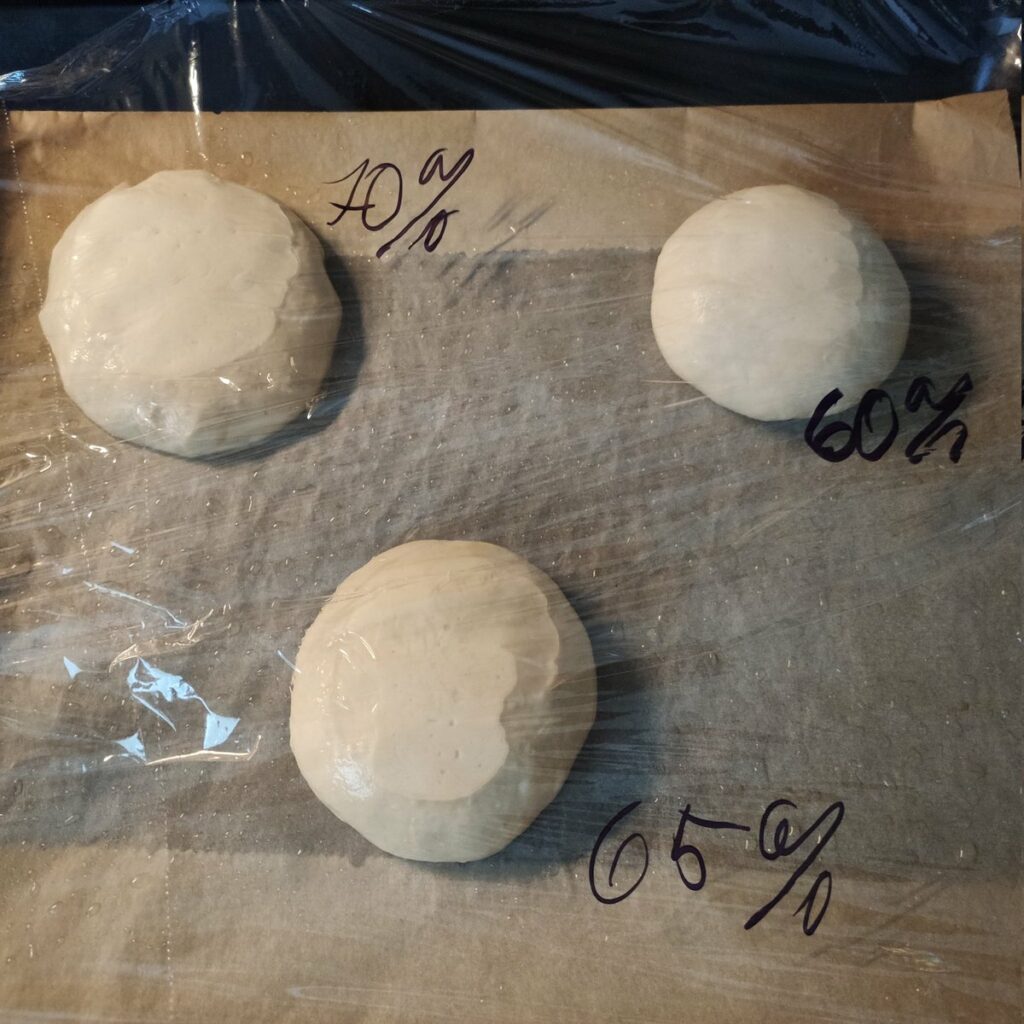
Are much easier to use and work with.
Dough is much firmer, holds it shape when its being handled and cooked.
The dough is not sticky, so easier to handle when shaping and stretching.
Need to be worked more when you are stretching out the dough. (Not as springy as other doughs)
When cooked, a dough that is low in hydration will rise less. This creates a pizza base which is denser not as airy, chewy, crispy and fluffy.
High Hydration Pizza Doughs (60-70%)
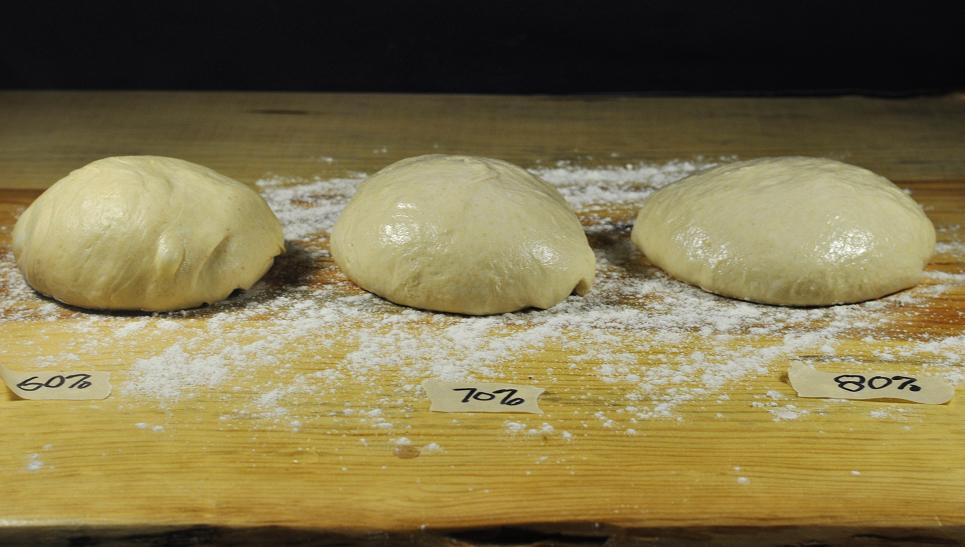
Are sticker (wetter) and more difficult to handle to shape.
Can be stretched much easier, but are harder to shape.
Bases are much lighter because they can be stretched very thin.
When cooked the base of the pizza are very crispy, thin, light, and not chewy at all.
External Factors Affecting Dough Hydration
- Inaccurate measurements
- Adding additional flour or water during kneading
- Humidity
- Altitude
Inaccurate measurements
Baking means accurate measuring. Always weigh your ingredients using electric scales. Your dealing with percentages, when making pizza dough, failure should be expected if you don’t measure accurately.
Adding additional flour or water during kneading
When kneading your dough, any addition counts towards the final result. Any addition of flour can result in lower dough hydration. So when you are kneading add any flour your using to knead to your final recipe. The same goes with any addition of water. Wet doughs require you to wet your hands when stretching, kneading or working with you dough, so again, any addition of water when working with your dough will effect the final hydration level of your final dough.
Humidity
Be aware of your environment. If you are in locations that have high humidity, this humid atmosphere will have an effect upon your flour. Any air moisture will be absorbed by the flour increasing the hydration of your pizza dough. And the reverse can happen with locations with dry weather.
Altitude
Higher altitudes can affect the moisture content of your flour. Flour that is effected by altitude will absorb more water. So be aware of this when calculating your dough hydration.
To many recipes and websites make out that pizza dough hydration is a complex and difficult process to master. But don’t be afraid, adopt the KIS method to everything you do in a kitchen. “K” Keep “I” It “S” Simple. If you adopt this principle, measure accurately and use quality ingredients that are suited for the style of pizza and remember use the principle of flour/water x100 = Dough Hydration.
Dough Hydration is not a mystic technique that Pizzaiolo’s whisper amongst themselves in the shadows. Just remember, these simple techniques and you too can become a master pizza maker in your home kitchen.



